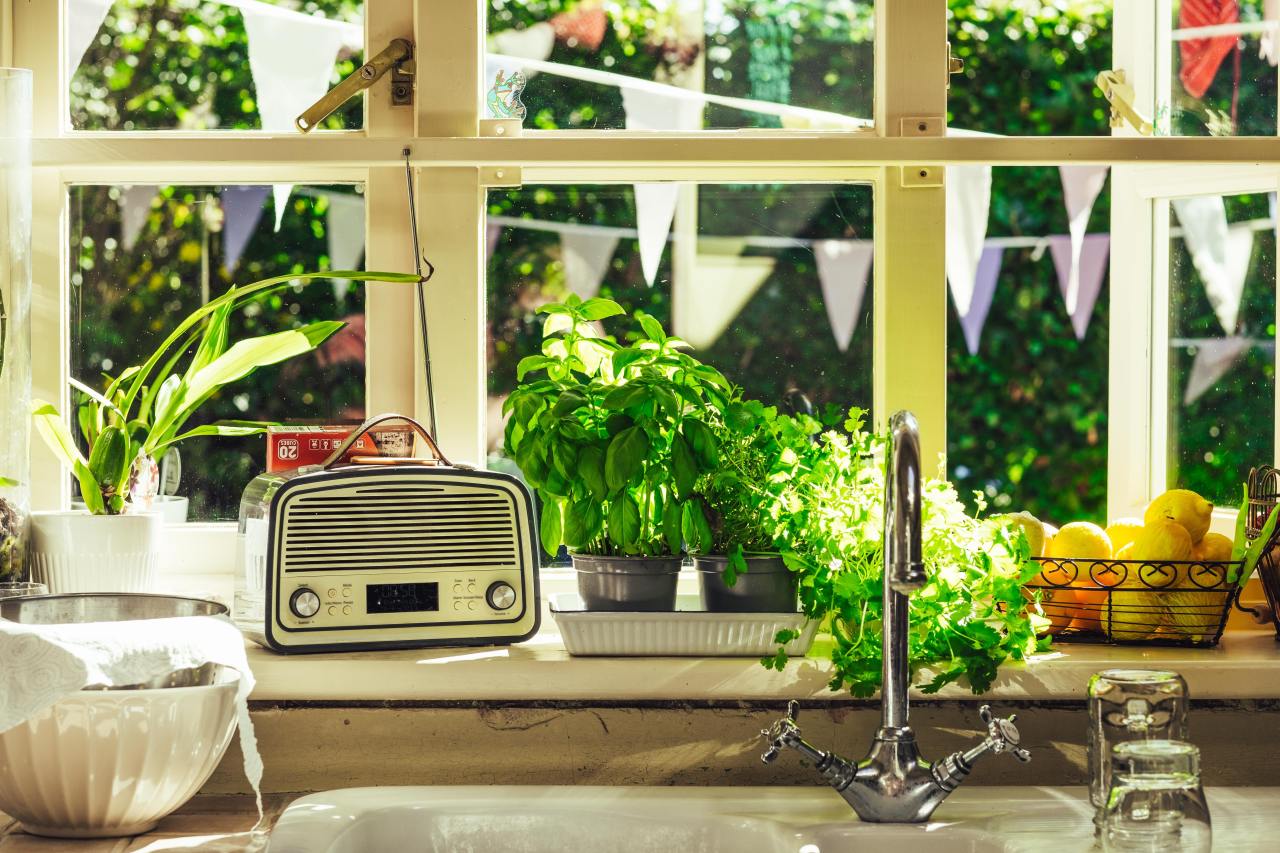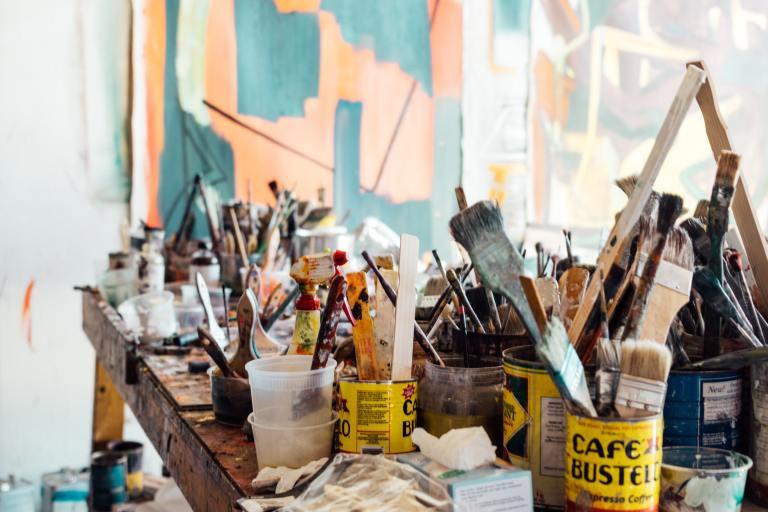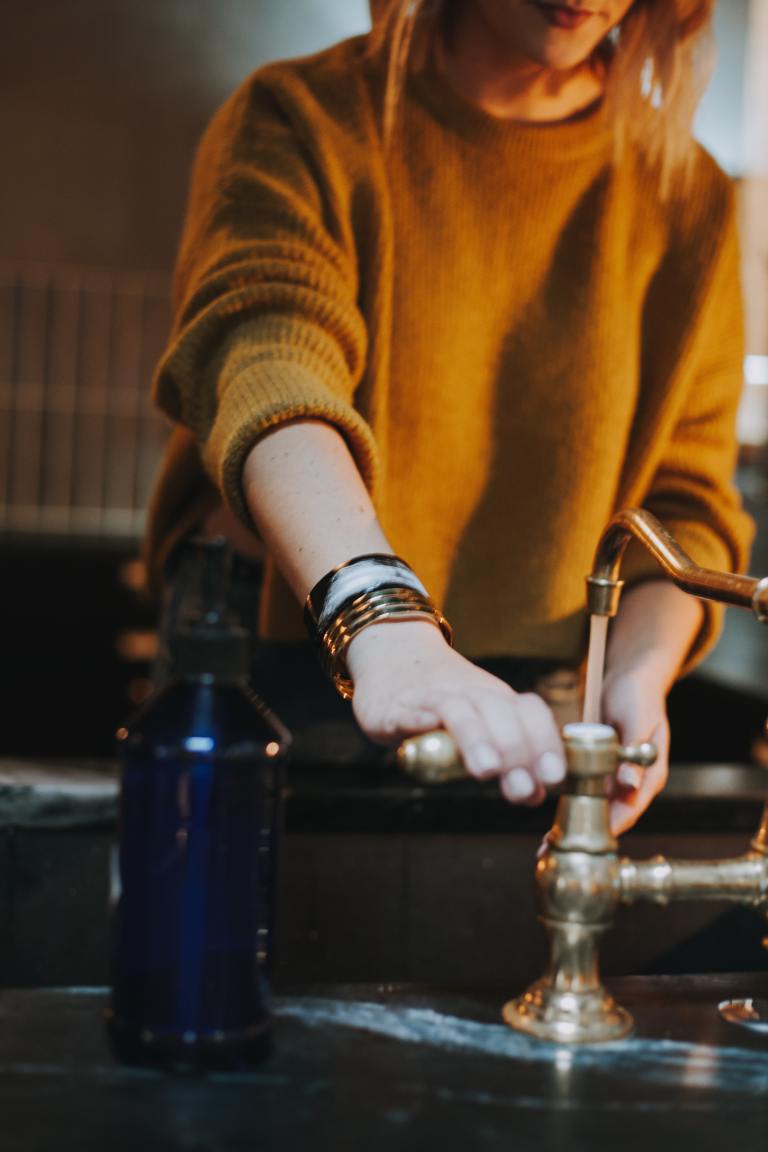Retro Kitchen Design & Inspiration (+ Products to Buy)
If you’re interested in preserving or recreating a retro kitchen design, you’re pretty tuned into the latest trends. In the past few years, vintage interior design has become more popular, with kitchens being one of the most popular rooms to infuse with a touch of years gone by.
Before you begin renovating your space, you’ll want to consider exactly what you mean by “retro.” When we use that term, we’re often referring to Mid-Century Modern design, or in other cases, Hollywood Regency. You’ll want to nail down exactly what time period you’re trying to channel because you could very easily end up with too many uncoordinated pieces that don’t fit the vibe quite right.
Next, you’ll want to come up with a color palette and mood board. Coordinating colors and tones are very important in retro design — in fact, some specific colors can signal a time period more effectively than even an authentic appliance or light fixture will.
Remember that you don’t necessarily have to go thrifting or try to restore out-of-date items for the sake of creating a certain aesthetic. Thanks to some innovative design, you’ll be able to select products that have all the quality and utility of current technology, while still maintaining your favorite retro appearance.
Style definition of Retro
Retro generally refers to the style of the recent past. Whereas Contemporary refers to what’s current and up-and-coming, and Mid-Century Modern refers to a period of modernity in the 50s and 60s, Retro can have varied definitions but mostly just encompasses an eclectic mix of the most popular pieces and styles from the past few decades.
Right now, Retro would be defined as using boldly colored, geometric wallpapers and designs, statement colors such as red, synthetic chairs or tiles, old-fashioned appliances or styled items, sleek but curved lines and rounded edges (think of the legs on a table or chairs) and statement lighting fixtures (especially in star-like or asymmetric shapes). Many people who go for Retro looks in their homes also use old-fashioned brands such as Coca-Cola as an accent decoration, while others utilize color tones from a specific era (such as subdued Earth tones from the 70s).
While there’s certainly room to experiment and coordinate what you think looks best, there are certain elements that are most characteristic of Retro design, and they are typically as follows:
- Bold statement colors
- Uniform color palette
- Geometric designs
- Curved lines
- Symmetrical layout
- Asymmetric decorations & light fixtures
- Synthetic materials
- Slightly modernistic or Bauhaus-inspired pieces
If you’re in the process of creating your own Retro space, you might want to consider using some of the more popular elements that define the style, such as checkered floors, black-and-white color palettes with pops of red, funky hardware, old-fashioned appliances, use of synthetic materials and polished woods, integration of clocks, scales, and other old-fashioned kitchen staples.
Retro kitchen inspiration
If you’re still not sure where to begin, take this kitchen for example.
https://www.instagram.com/p/BueMymfHKzc/
While this space certainly adheres to the most important style markers — dull navy, classic red acrylic kitchenware for a pop of color, mixed pattern tiles with more subtle tones and Mid-Century inspired lighting fixtures — it also brings in a sense of modernity with the small drink refrigerator, fresh faucet, and overall newness of the space.
Our favorite retro kitchen products to buy
Kohler K-20022-PC-NA Ludington 32″ Under Mount Single Bowl Kitchen Sink
A minimal kitchen sink design that’s transitional for a retro-style kitchen.
Maxim 14402NAWT Bali Chandelier
This woven chandelier is perfect for retro-style kitchens.
TINAGO Black Kitchen Sink Faucet with Pull Down Sprayer
This minimal kitchen faucet should transition well into your retro-inspired kitchen design.
Creating your retro kitchen
Ultimately, creating the Retro kitchen of your dreams is all about consistency, style, and placement. Remember that it’s okay to put your own spin on a Retro kitchen, especially if you want to use statement colors that are anything but red. No matter what, it’s about utilizing a uniformed color palette, having vintage-looking appliances and features, utilizing materials that are inorganic (such as plastics and polyesters), and choosing items that have curved designs, and geometric patterns. Though Retro can often reference a very specific looking space, remember that what matters, in the end, is that you’re able to create a home in which you feel most at ease and comfortable. If that means having funky wallpaper and an acrylic teapot? Then so be it.





